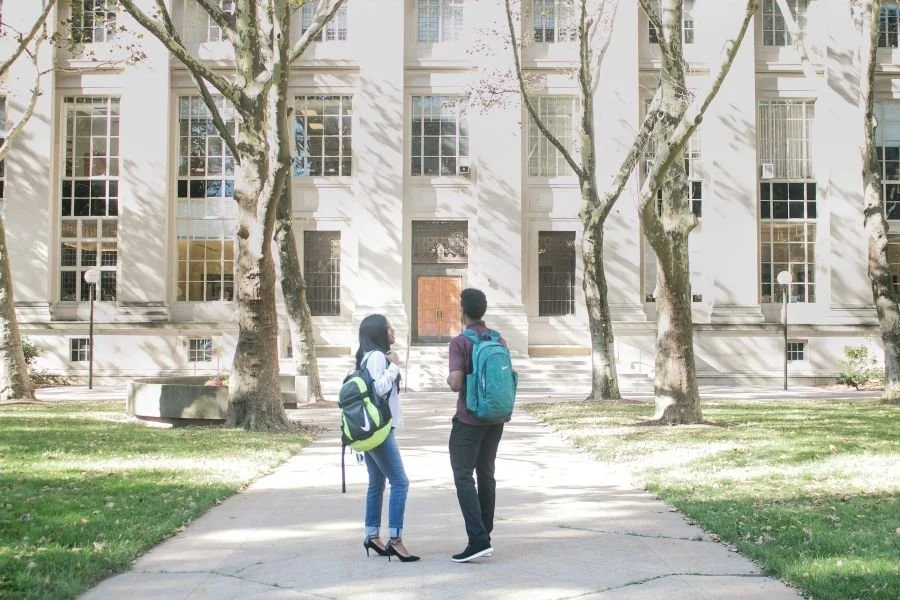Nurturing Creativity in International Schools: Learning Beyond Textbooks
/Creativity has become one of the most valuable skills a young person can develop today. It fuels adaptability in a rapidly changing world and drives innovation across nearly every field—from science, technology, and engineering to media and the arts. More than a reflection of talent, creativity embodies the ability to think independently, make connections between ideas, and devise fresh solutions to complex challenges.
International schools have long recognized the importance of nurturing this skill. With their diverse communities, inquiry-based learning models, and global outlook, they provide an environment where curiosity and imagination can flourish. Students aren’t simply taught to absorb information; they’re encouraged to question, explore, and express themselves in meaningful ways. This culture of openness and experimentation extends well beyond academics, shaping how students engage with the world around them.
Let’s explore how an international school can foster creativity beyond the classroom, providing experiences that help students grow into confident and inventive thinkers.
CREDIT: The Jopwell Collection on Unsplash
Arts and Performance Programs
Few things spark imagination more than artistic expression. Whether through music, dance, or visual art, the creative process gives students the freedom to interpret the world in their own way. In international schools, arts and performance aren’t treated as extracurricular add-ons but as central to a well-rounded education. Students are often given opportunities to stage plays, curate exhibitions, or collaborate on cross-cultural performances that celebrate diversity and shared experiences. These projects teach much more than artistic technique; they nurture empathy and discipline, and also help build confidence in oneself.
Service Learning and Community Projects
When creativity meets compassion, it becomes a powerful force for change. International schools often design community service programs that challenge students to think innovatively about solving real-world problems. This might look like developing a sustainability campaign, designing a fundraising event, or maybe even launching a small-scale social enterprise all experiences that encourage learners to apply their creativity to tangible goals.
Through these projects, students discover that creativity extends beyond art or design it also involves reimagining systems and finding ways to improve lives. They develop a deeper understanding of their role as global citizens, often seeing how empathy and innovation can work together to make a meaningful, positive impact.
Innovation Labs and Makerspaces
Experimentation is the heart of creativity, and makerspaces offer exactly that: room to tinker, test, explore, and create. International schools typically have dedicated innovation hubs where students can use tools like 3D printers, coding kits, or robotic equipment to bring their ideas to life. These spaces allow for hands-on learning experiences that bridge science, art, and design, where students can explore how things work and how they might be improved.
Students with access to these spaces get the chance to build resilience and problem-solving skills by working through trial and error. They learn that failure isn’t the opposite of success but often part of the process. This mindset prepares them to approach challenges with curiosity and confidence, essential qualities in any creative endeavor.
Outdoor and Experiential Learning
Creativity often flourishes when learning moves beyond the four walls of the average classroom. Outdoor education programs and cultural field trips, as well as eco-camps, immerse students in settings that stimulate curiosity and critical thinking. Lessons take on a new dimension in such environments. Science connects with the natural world, and problem-solving becomes a hands-on exercise.
Such experiences help students see knowledge as something alive and relevant. When they’re analyzing marine ecosystems on a beach trip or navigating a community project in a rural area, for example, they learn to approach unfamiliar situations with flexibility and imagination. These are skills that can’t always be taught through textbooks alone.
Clubs, Competitions, and Student-Led Initiatives
Ownership is a powerful driver of creative thinking. When students take the lead in shaping their activities—organizing clubs, hosting events, or participating in international competitions they see firsthand how ideas can turn into action. International schools often provide both the freedom and support for these initiatives, giving students space to experiment with planning, collaboration, and other key elements of leadership. A debate club may spark an interest in public speaking, while a robotics challenge can ignite a passion for engineering. More importantly, these experiences foster self-direction and accountability.
Cross-Cultural Collaboration
In an international school environment, diversity itself becomes a catalyst for creativity. Collaborating with peers from different cultural backgrounds encourages students to look beyond their own perspectives and question familiar assumptions. Group projects, cultural fairs, and collaborative problem-solving activities provide opportunities to exchange ideas and discover new ways of thinking. Through this process, students learn to see differences as sources of strength. The creativity they develop is not only original but also inclusive and globally relevant.
Technology and Digital Storytelling
Today, digital tools shape nearly every form of expression, which means creativity increasingly happens on screen as well as on stage. International schools often integrate technology into creative projects by allowing students to produce films, podcasts, animations, or interactive designs. These projects teach technical skills, but they also help young learners craft compelling narratives and think critically about the media they consume and create. Students exploring the intersection of art and technology learn to communicate in formats that resonate with modern audiences.
True creativity doesn’t stop when the school day ends. In international schools, it becomes a lens for seeing and engaging with the world one that continues to evolve long after students leave campus. By learning to approach life with imagination at the forefront, young people develop the mindset needed to shape a future that is both innovative and inclusive.
Disclosure: This is a collaborative post.



























